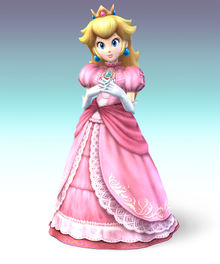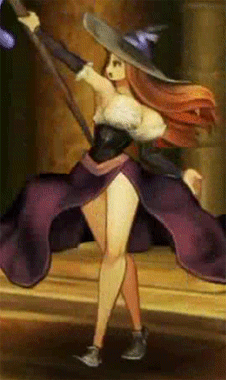__________________________
Conan The Barbarian
If you love Fantasy books and movies, then this next character needs no introduction. This mountain of a man is the spitting image of Arnold Schwarzenegger in his breakout role as Conan The Barbarian!

Trivia: the original script for the film Conan The Barbarian had Conan fighting mutant animal human hybrids, not unlike the classic pig-faced orcs lying defeated in the background of this image.
Conan the Barbarian put Arnold on the map and kicked off the Sword and Sorcery craze of the 80s leaving an incredibly deep impression on the young medium of videogames. The first Conan film is legitimately great. Penned and directed by John Milius (who also wrote the all time great film Apocalypse Now), it is one of the most iconic films out thereone of my absolute favorites. It was based on a series of short stories by Robert E Howard. The books are awesome and I enthusiastically recommend them to any fan of Fantasy or Literature (with a capital L!) in general. They may surprise you. Conan is one of the smartest characters Ive ever encountered in fiction.
__________________________
Frazetta Style Sorceress
You cant have Swords and Sorcery without a buxom sorceress! This next character looks very much like a classic Frank Frazetta vixen.

She is dressed very similarly to Princess Teegra from the 1983 film, Fire and Ice, a collaboration between Frank Frazetta and Ralph Bakshi, a luminary of alternative American animation. Her pose and demeanor are much more fierce though, and recall Frazettas paintings of femme fatale sorceresses.
__________________________
Mickey Mouse!
This is flat out one of my favorite homages in anything Ive ever seen. This enthusiastic little fellow is a tribute to Mickey Mouse from the Sorcerers Apprentice segment of Disneys Fantasia.

Theyre both wearing the same iconic, pointy wizards cap and the warmly lit stairwell in the back is an especially nice touch.

__________________________
Nike of Samothrace
Next were treated to another great icon of Western Art, The Nike of Samothrace (also called The Winged Victory).

Its speculated that this statue was originally made to commemorate a great naval victory.
__________________________
The Films of Ray Harryhausen
The trailer continues with a collage of monsters straight out of the films of Ray Harryhausen, a titan in the world of special effects. As a child, Harryhausen saw King Kong (1933) and instantly fell in love with the model animation techniques used to bring its fantastic creatures to life. From that point on, Harryhausen dedicated his life to creating stop motion films that brought creatures and worlds only that only previously existed in imagination into the material world of film.
Harryhausen was very inspired by the burgeoning field of Science Fiction literature and was actually a close lifelong friend of another cultural titan, Ray Bradbury. Try to imagine a time when the terms Visual Effects, Stop Motion and Sci-Fi where not part of the vernacular. The work of Ray Harryhausen was crucial in bringing those concepts to a wide audience. From the 1940s through the 1990s Ray Harryhausen was responsible for some of the most fantastic and iconic creatures ever to grace a silver screen. These monsters left an indelible mark on film and surely inspired generations of game artists and developers as well. Mr Harryhausen, Vanillaware salutes you!
__________________________
Skeleton Warriors

First up is that most humble of videogame foes, the killer skeleton. Its absolutely ubiquitous today, but in 1958 when The 7th Voyage of Sinbad hit theaters in the US it was a totally novel concept.
Sinbad would go on to become a sleeper hit (its score by famous Hitchcock collaborator, Bernard Herman, is considered one of the best in film history and also undoubtedly influenced many early videogame sound tracks), but the skeleton warrior would make a huge splash several years later when it reappeared (and multiplied!) in Jason and the Argonauts (1963), one of Harryhausens more critically and commercially successful films and his personal favorite of the bunch.
The scene where Jason fights the group of skeletons, with its intricate, near seamless interaction of live action and animation elements, is considered a defining moment in the history of VFX.
(this clip does not contain the original audio track, but it sure is cool)
__________________________
Talos, the Bronze Giant
The next Harryhausen creature to appear is Talos, a giant animated bronze statue that also appears in Jason and the Argonauts.

In Greek mythology, Talos was a giant man made out of bronze who was created by Zeus to protect Europa, the first Queen of Crete (and his lover who he had stolen away while disguised as a white bull). Europe takes its name after her.
Harryhausens version of Talos was inspired by classical depictions of the Colossus of Rhodes, one of the 7 Wonders of the Ancient World.

Engraving by Marten van Heemskerck (1498-1574)
__________________________
Medussa
Medussa is another iconic monster that Ray Harryhausen helped to define in the global consciousness with his 1981 film Clash of the Titans.

In Greek mythology, Medussa was a Gorgon, a monstrous female creature often depicted with sharp fangs and snakes for hair who could turn men to stone with her fierce gaze.
The earliest depictions of gorgons show them as women with scary faces, often adorning temples in order to protect them from harm.

In AD 8, the Roman poet Ovid completed the epic, The Metamorphosis, which introduced the idea that Medusa had once been an incredibly beautiful maiden before being cursed and transformed into a horrible monster. However artists had already been depicting Medusa with a classically beautiful face as early as the 4th or 5th Century BC.

The Medusa Rondanini. This is a roman copy of a Greek statue dating from either the 4th of 5th century that is considered to be the oldest known "beautiful gorgoneion."
By the Renaissance onward this became the new norm for Medusa.

Ray Harryhausen returned Medusa to her roots depicting her as grotesque monster. As far as I know, it was Ray Harryhausen who first designed her with the lower body of a snake and other heightened reptilian features such as scaly skin and a rattler. Vanillaware plays off of this convention and even adds a striped pattern to her scales similar to that of a timber rattlesnake, though theyve chosen to maintain the attractive face preferred by most classical painters.
The monsters called out in this trailer represent just a small fraction of Ray Harryhausens oeuvre. Ray Harryhausen is one of the most important fantasy artists of the last century and his visual legacy lives on in countless films and videogames. To learn more about Ray Harryhausen please visit his official website here:
http://www.rayharryhausen.com/index.php
Thats all for today, but theres still much to cover in this trailer. Keep your eyes peeled on for more updates from Art-Eater on Facebook and Twitter as we look deeper into the world of Dragons Crown. Thanks for reading!
__________________________























 --or--
--or-- 




Log in to comment